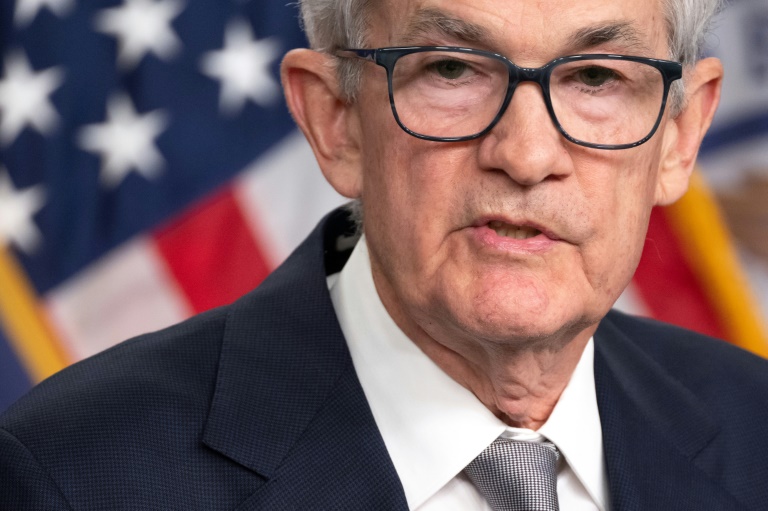US Fed expected to pause again as inflation edges closer to target

US Fed Chair Jerome Powell said recently that it was premature to speculate on interest rate cuts
Washington – The US Federal Reserve is widely expected to hold interest rates at a 22-year high for a third consecutive meeting on Wednesday as it continues to fight elevated inflation.
With the financial markets all but certain that another pause is coming, traders and analysts are now debating how soon the US central bank will start cutting interest rates, and how rapidly it will then do so.
“The given is that there won’t be a rate hike,” EY Chief Economist Gregory Daco told AFP. “But there’s a lot of unknowns as to how the Fed will frame the policy outlook going into next year.”
The Fed, which has a dual mandate to lower inflation to its long-term target of two percent while also tackling unemployment, has continued to keep the threat of another rate hike alive.
“It would be premature to conclude with confidence that we have achieved a sufficiently restrictive stance, or to speculate on when policy might ease,” Fed Chair Jerome Powell said recently.
Daco from EY said the Fed is fighting a “battle for optionality” in which policymakers continue to insist that another interest rate hike could happen, “if deemed necessary.”
This battle is putting the Fed at odds with other central banks like the European Central Bank, whose policymakers have voiced growing support for an end to rate hikes amid a steep decline in inflation.
– Progress on inflation –
Recent US economic data point to low unemployment, resilient job creation, positive economic growth and falling inflation.
The latest consumer price index (CPI) showed an annual inflation rate of 3.2 percent, down from a pandemic-era peak of 9.1 percent.
The string of positive data has raised hopes the Fed will meet its dual mandate without plunging the world’s biggest economy into a damaging recession — a rare feat in monetary policy known as a “soft landing.”
Much rides on the outcome for President Joe Biden who will seek reelection in 2024.
New numbers came out on Friday showing an increase of 199,000 new jobs last month, and Biden told a crowd in Las Vegas that such steady expansion is what “we call a ‘sweet spot’ that’s needed for stable growth and lower inflation, not encouraging the Fed to raise interest rates.”
In the futures markets, traders have assigned a probability of more than 98 percent that the Fed will sit tight at its next rate decision this week, according to data from CME Group.
– Disagreement on future cuts –
While there is broad consensus over a December pause, traders and analysts are far less certain about what comes next.
“The discussion around a normalization of monetary policy will turn more active next year as progress on inflation continues further,” economists at Deutsche Bank wrote in a recent note to clients.
They predict interest rate cuts of 1.75 percentage points in 2024 — far higher than the Fed’s recent forecast of just half a percentage point of cuts.
Meantime, the financial markets are pricing in around 1.25 percentage points of rate cuts next year, starting in March, according to Daco from EY.
He predicts the Fed will cut interest rates by only one percentage point in 2024, beginning in May.
“So, not only do we have a later onset to the cutting cycle but also fewer rate cuts,” he said.
Other analysts foresee an even less aggressive path of interest rate cuts.
“We retain our baseline that the Fed will remain on hold until December 2024 before implementing every-other-meeting cuts,” economists at Barclays wrote in a recent investor note.
Alongside the interest rate decision this week, the US central bank will publish a quarterly update to its summary of economic projections, or SEP, after which Powell will speak to reporters.
The SEP should provide analysts and traders a better insight into policymakers’ thinking on economic growth, inflation, unemployment, and interest rate cuts.
“We expect the updated economic projections and the post-meeting press conference to push back against the idea that rate cuts could come onto the agenda anytime soon,” Michael Pearce, Oxford Economics’ lead US economist, wrote in a recent note to clients.
“If anything, we expect policymakers to err on the side of leaving rates too high for too long.”
